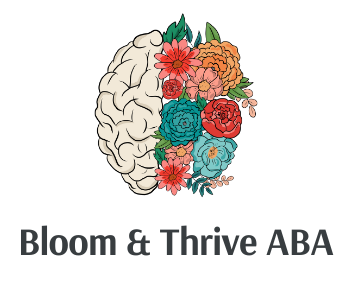The Benefits of Early Intervention with ABA Therapy in a Clinic Setting
Early intervention is a cornerstone of effective treatment for children with autism and other developmental challenges. Applied Behavior Analysis (ABA) therapy, when introduced during the formative years in a dedicated clinic setting, offers a powerful framework to build essential skills, improve communication, and foster social growth. In this in-depth exploration, we’ll delve into why early intervention matters and how the unique advantages of a clinical environment amplify the benefits of ABA therapy.
The Critical Window of Neuroplasticity
During early childhood, the brain is remarkably adaptable—a phenomenon known as neuroplasticity. This is the time when neural pathways are rapidly forming, making it easier for children to learn new behaviors, language, and social skills. Early intervention capitalizes on this developmental phase, allowing therapists to:
• Establish Foundational Skills: By introducing ABA therapy early, children have the opportunity to learn critical life skills before maladaptive behaviors become ingrained.
• Promote Brain Development: Consistent, targeted interventions help strengthen neural connections that underpin communication, cognitive processing, and social interaction.
The Clinic Setting: A Controlled, Focused Environment
A clinic dedicated to ABA therapy offers a structured and distraction-free setting that is especially beneficial for early intervention. Key advantages include:
• Consistent Routines and Structure: Clinics are designed to create predictable environments, which are crucial for children who thrive on routine. This consistency helps reduce anxiety and enables children to focus on learning.
• Minimized Distractions: Unlike home or community settings, a clinic offers a controlled space where extraneous stimuli are minimized, allowing the child to concentrate on therapeutic tasks.
• Specialized Equipment and Materials: Clinics are equipped with tools—such as visual aids, interactive technology, and sensory resources—that are specifically selected to enhance learning and engagement.
Individualized Treatment Plans and Data-Driven Progress
One of the hallmarks of ABA therapy is its focus on personalized treatment. In a clinic setting, therapists can:
• Develop Tailored Programs: Each child is unique. Clinicians assess individual strengths and challenges, creating a customized intervention plan that addresses specific needs. Early intervention ensures that these plans are implemented when the child’s learning capacity is at its peak.
• Monitor Progress Closely: Clinics have systems in place for rigorous data collection and analysis. This allows therapists to track progress in real time, adjust strategies as needed, and celebrate small wins that build momentum over time.
• Set Measurable Goals: With clear, achievable targets, early intervention in a clinic setting lays out a roadmap for success, ensuring that each step in the therapy process contributes to long-term developmental gains.
Enhancing Communication and Social Skills
ABA therapy in a clinical environment plays a vital role in developing communication skills—a critical area for children with autism. Through early intervention:
• Language Development is Accelerated: Techniques such as manding (making requests) and tacting (labeling objects or events) are introduced early, empowering children to communicate effectively.
• Improved Social Interactions: Structured social skills training within the clinic setting allows children to learn appropriate social cues and practice interactions in a safe, supportive space.
• Reduction in Behavioral Challenges: As children gain the ability to express their needs, frustration and challenging behaviors often decrease. This not only improves the child’s day-to-day experience but also eases the overall therapy process.
Family Involvement and Long-Term Benefits
Early intervention with ABA therapy isn’t just about the child—it also involves and empowers families:
• Parent Training and Collaboration: Clinics often incorporate training sessions for parents and caregivers, ensuring that strategies used in therapy can be reinforced at home. This continuity helps solidify gains made during clinic sessions.
• Building a Support Network: A clinic setting creates opportunities for families to connect with professionals and other caregivers, fostering a community of support and shared learning.
• Long-Term Success: By intervening early, children are better prepared for academic and social environments as they grow older. Early intervention lays the groundwork for ongoing development, increasing the likelihood of long-term success in school, work, and personal relationships.
Final Thoughts
Early intervention with ABA therapy in a clinic setting harnesses the advantages of both timely, targeted treatment and a specialized environment designed for success. With the brain’s natural propensity for learning during early childhood, the structured and individualized approach offered in clinics sets the stage for meaningful, lasting improvements in communication, social skills, and overall behavior.
For families navigating the challenges of developmental delays or autism, seeking out a clinic-based ABA program can be a transformative decision. By providing early, focused intervention, these programs not only unlock a child’s potential but also build a foundation for a more independent and fulfilling future.





